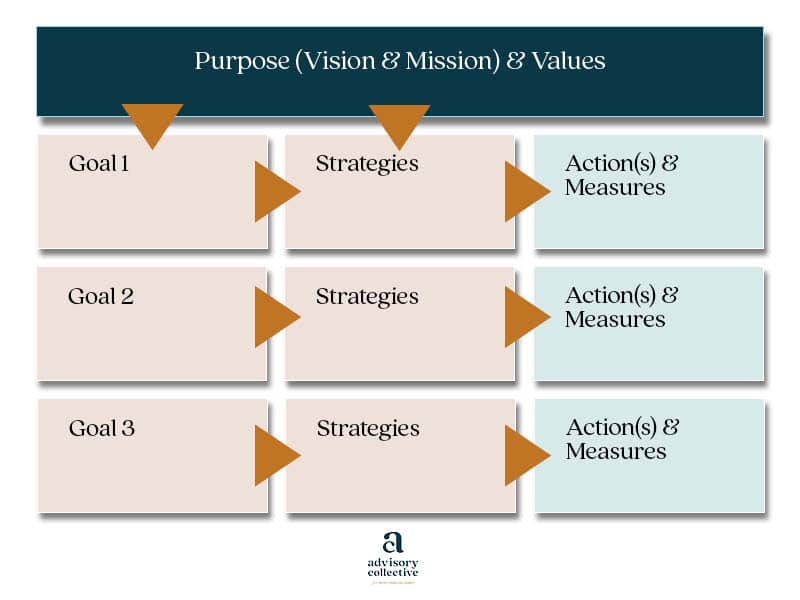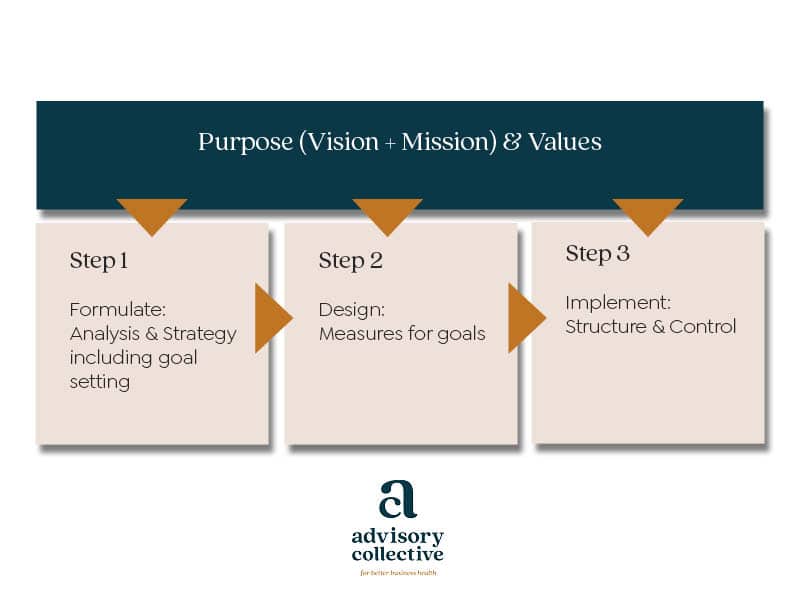
In my previous posts in this series I explored how small to medium sized businesses can capture their Vision and Mission through a practical Purpose Statement, and then how they should give early attention to defining their business Values so that personal behaviours are engaged and aligned with that. However, it’s not enough to have Purpose and Values, even though we see them as the strategic foundations of any business – all businesses should have a strategic business plan to put them to work.
At this point some of our smaller clients tell us that they know what they are doing, strategic business plan is too hard and “only for big corporates”, or they’d rather “just get on with the job”. I respond to that by advising them that:
And there are two other very good reasons why even small businesses should conduct strategic business planning:
If you are still unsure, why not take 10min and complete our strategic health check Begin Strategy Assessment. Or you can Speak to our Advisers
Creating a strategy and business plan doesn’t need to be a 20-coffee-mind-bending-marathon. Here are my simple tips for getting a good job done quickly:
No two Strategic Plans should look the same, but we think that there are five elements that should always be present:
Learn more about our Strategic Planning Process or speak to an adviser.
At the Advisory Collective we describe this model as “PGSA” – a more contemporary evolution of the classic “OGSM” model that some big corporates have used more or less well for over 50 years:

There are three primary, linear stages to any Strategic Plan using the PGSA (or OGSM) model, with a number of substages:

Within the four elements of our PGSA model the one which seems to be the hardest for many business owners and leaders to capture is “Strategy”. My tip here is to focus clearly on simple “how” questions, and use a system like our own Six Pillars Strategic Framework to ensure completeness:
One trick to keeping your Strategic Plan “high level” is to only use singular bullet points to capture your Strategy for each of the above in that document, and reserve any necessary detail for a focused Strategy for each Pillar, eg by developing a dedicated Sales and Marketing Strategy to describe “how” you will achieve your Customer Pillar Goals.
Once you have identified your Strategies you need to schedule practical, prioritised Actions that deliver targeted results. You also need to think carefully about predesigned Measures – “what does success look like?” So design, schedule and allocate the implementation work, to keep your Strategy on track.
Remember to keep your Actions and Measures simple, relevant and manageable – they only exist to serve and support your Purpose, and implement your Strategy so that you achieve your Goals.
There is an “old but good” business cliche that most business strategies that fail do so because of poor implementation and execution. And we agree that there is some truth to that.
We could write a lengthy post on this subject alone, but here are five simple steps to help you to implement your strategy well:
A great Strategic Plan might be fit for purpose over a number of years, with minimal refinements each year as you “learn by doing”. It is therefore important to always focus on the “big picture” in your Strategic Plans. Jeff Bezos perhaps explained it best:
“It helps to base your strategy on things that won’t change. When I’m talking with people outside the company, there’s a question that comes up very commonly: ‘What’s going to change in the next five to ten years?’ But I very rarely get asked, ‘What’s not going to change in the next five to ten years?’ At Amazon we’re always trying to figure that out, because you can really spin up flywheels around those things. All the energy you invest in them today will still be paying you dividends ten years from now. Whereas, if you base your strategy first and foremost on more transitory things — who your competitors are, what kind of technologies are available, and so on — those things are going to change so rapidly that you’re going to have to change your strategy very rapidly, too.”
No matter what, never forget your Purpose and Values – because they make owning and leading your business worthwhile, and give your Strategic Plan its true meaning.
If you would like to learn more about our expertise in Strategic Business Planning or how we can help your business transformation process, please reach out to us. Speak to our Advisers
If you are still unsure, why not take 10min and complete our strategic health check Begin Strategy Assessment.